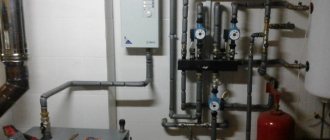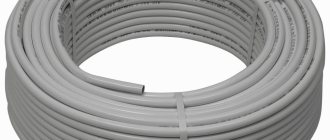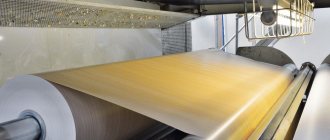Gas generator boilers are one of the types of solid fuel, usually water heating devices. The essence of its work is that the fuel and volatile substances in it burn separately. In other words, pyrolysis of solid fuel occurs, which is why boilers are also called pyrolysis boilers. This heating equipment is especially effective when working with wood, wood briquettes, brown coal and some fractions of coal.
Use gas generator boilers to heat your home
Read more: long-burning pyrolysis boiler.
Unit design
The design of the gas generator boiler is a furnace with two chambers, which are separated by cast iron grates. The first chamber is designed for pyrolysis of wood, and the second is for burning the released gas. In some designs, gas chambers are connected to cooking stoves. The main details of such a device are:
- nozzle;
- fan;
- controllers;
- air ducts;
- water pipes;
- chimney.
Read more: DIY chimney.
In this video we will look at the operating principle of gas generator boilers:
In addition, to ensure safe operation of boiler equipment, the design contains: safety valves, pressure measurement sensors, air supply regulators. General monitoring and adjustment of the operational process is carried out using an electronic control unit. Some boiler models have remote control.
Efficient energy consumption
Even the average person who has a gas boiler installed for heating their home may wonder about the rational use of thermal energy. Indeed, when gas is burned in a boiler, not all of the heat generated is used.
When a heating system operates, some part of the heat is always lost irretrievably. This usually happens when combustion products are released from the boiler into the atmosphere. In fact, this is wasted energy that could have been used.
What exactly are we talking about? On the possibility of using wasted heat in the production of electrical energy.

If we assume that the heating boiler system is already optimized in order to maximize efficiency, then the “discarded” energy still constitutes a significant proportion of the energy that is released during fuel combustion
The types of fuel can be different, starting with banal firewood and all kinds of briquettes, ending with the most economical options: main gas with a predominance of methane in its composition, artificial blue fuel and liquefied propane-butane mixtures.
It may seem that this is far from the “discovery of America,” but in fact, the technology, or rather, the installation, developed back in 1943 by Robert Stirling, exists. Its design features and basic operating principle make it possible to classify this system as an internal combustion engine.
Why then was this installation not used for such a significant time? The answer is simple - the theoretical development of technology in the forties of the last century turned out to be very cumbersome in practice.
The technologies and materials that existed at the time of development did not allow reducing the size of the installation, and the existing methods of producing electrical energy were more cost-effective.
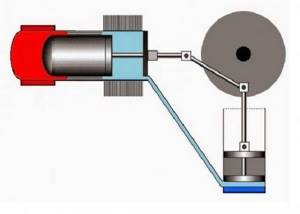
Including a device in the gas boiler circuit that converts wasted heat into electricity can significantly increase the efficiency of the gas processing plant.
What can make us today think about a more careful attitude towards resources that are not classified as renewable? Nowadays there is a common problem all over the world - the development of technology inevitably leads to an increase in the consumption of electrical energy.
The increase in consumption is happening at such a rapid pace that network companies do not have time to modernize electrical energy transmission systems, not to mention production. This situation inevitably leads to the fact that elements of power supply systems fail, and in some cases this can happen with enviable regularity.
Modern heating boilers are equipped with control systems that are also energy-dependent. The circulation pump, sensors, automation, and the panel itself need power. The entire set of devices cannot but cause concern for maintaining functionality during a power outage.
It is not possible to run forced heating systems without electricity. A power outage during the heating season is almost catastrophic for them. Not only will this inevitably lead to rapid cooling of the room, but if the heating is not operating for a long time, the circuit may freeze.

A prolonged absence of operation of the heating system during the cold season leads to freezing of the heating system, the appearance of ice plugs in it and, ultimately, damage to equipment and heating pipes due to rupture
The standard existing options for solving the issue are the installation of uninterruptible power supplies, generators of various modifications (gas, petrol, diesel generators or unconventional sources - wind generators or mini thermal power plants, hydroelectric power stations).
But this solution is not acceptable to everyone, since many find it difficult to allocate space for installing an autonomous electricity supplier.
While residents of individual houses can still allocate space for a generator, this is almost impossible for installation in a multi-storey building. Thus, it turns out that residents of apartment buildings with individual heating systems are the first to suffer when the power goes out.
That is why, first of all, companies that produce components for assembling heating systems have asked themselves the question of making full use of the heat that is “thrown away” by the heating system. We thought about how to use this wasted substance to generate electricity.
Of the well-known technologies, the developers chose the “well-forgotten” Stirling installation; modern technologies make it possible to increase its efficiency while maintaining a compact size.
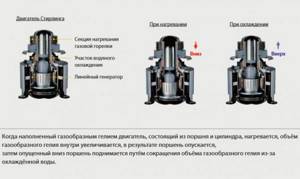
The principle of operation of the Stirling engine is the movement of the engine piston down and up. The engine operates almost silently and does not cause equipment vibrations
The operating principle of the Stirling installation is based on the use of heating and cooling of the working fluid, which in turn activates a mechanism that generates electrical energy.
Inside the piston (closed) there is a pumped gas; when heated, the gaseous medium expands and moves the piston in one direction; after cooling in the cooler, it contracts and moves the piston in the other direction.
Rules for choosing fuel
During the combustion of any solid fuel, carbon monoxide is released. From the experience of using gas generators, it has been proven that the release of this gas in especially large quantities occurs when wood is burned.
Hence the conclusion that it is best to heat this unit with wood . In modern boilers, their ignition and further combustion process are fully automated. At the same time, certain requirements are imposed on such fuel.
The moisture content of the wood used should not exceed 20%, otherwise it will have to be pre-dried. At the same time, you should choose only the hardest types of wood: beech, oak, acacia. You cannot use coal in those models where this option is not provided, as the unit may fail.
Story
When developing solid fuel gas generator boilers, attention was primarily paid to the volume of the combustion chambers and the amount of solid fuel consumed. But because of this, they achieved a slight increase in efficiency with increasing overall dimensions and weight of the boilers. No one took into account that pyrolysis releases gas, which was not effectively used in the chambers of previous models of wood or coal boilers.
As a result of lengthy experiments, it became clear that it was necessary to use the properties of organic substances, which, when there is a lack of oxygen, release flammable gas - pyrolysis. The use of solid fuel not for the main release of heat, but for the production of CO, made it possible to create a boiler that combines the combustion of solid fuel and gas. The solid fuel gas generator boiler increased the heating effect, combined savings and low cost of fuel, using the pyrolysis process.
Operating principle of the equipment
During combustion, solid fuel begins to release gas, which continues to support this process. Wood-burning gas-generating boilers are designed in such a way that rapid combustion is impossible in them as in conventional stoves. This happens because carbon monoxide burns in a separate chamber. Thus, the whole process is divided into several stages:
- First, solid fuel undergoes a drying process in a special section of the gas generator boiler.
- Next, the wood burns in the firebox at a temperature range from 200 to 850°C. During this process, practically no oxygen enters the furnace.
- The released gas burns in a special chamber using burners.
As a result, the fuel is divided into two components: a solid fraction and a gaseous substance. The removal of these parts from the boiler occurs separately, and when gas and carbon come into contact during combustion, the smoke is purified from harmful substances.
Advantages and disadvantages
Like any type of heating equipment, gas-generating solid fuel boilers have pros and cons in design and operation.
Simple design
Advantages
- Let's start with the efficiency factor, as the most fundamental criterion for the efficient operation of the unit. So for pyrolysis solid fuel boilers it has a range of 85-95%. For comparison: conventional wood-burning units have an efficiency of no more than 65%. The efficiency coefficient determines the ratio of fuel consumption, which is sufficient to generate the required amount of thermal energy. And it, in turn, must be rationally used to maintain the required temperature conditions indoors. This is such a complex relationship.
- In gas generators, fuel burns much longer than in conventional appliances. If firewood is used as fuel, then the duration of burning one bookmark can last for a couple of days. With coal this figure is much longer, up to one week.
- The wood-burning gas generator has certain design features that help burn the fuel to the end. All that remains is ash and soot on the walls of the combustion chamber. Why is this a positive thing? There are two factors here: the bookmark burns longer, and cleaning the device is simplified.
- Typically, solid fuel boilers are difficult to automate. It is almost impossible to regulate the processes occurring inside the unit. In wood-burning gas stoves, the combustion process can be automated. Of course, this is not as simple as, say, with gas or electric heating devices, but such a possibility is present.
- Since carbon monoxide is purified and burned, this means that a small amount of harmful substances enters the surrounding atmosphere. Today, this is one of the most stringent requirements that wood-fired pyrolysis boilers fully comply with.
- Modern models of gas generators have various advantages that set them apart from the general category of solid fuel boilers. For example, in the firebox of some models you can fit logs more than one meter long and use wood with a moisture content of up to 50%.
Homemade gas generator device
Flaws
- The big disadvantage of wood-fired gas generator boilers is the difficulty of supplying air to the mixing chamber with carbon monoxide. It is very difficult to do this in a natural way, so almost all models in their design use mechanical inflation using a fan. And this suggests that our boiler immediately goes into the category of “energy-dependent units”.
- If you miss the moment of power drop, especially when it drops below half of its nominal value, then tar immediately begins to form on the walls of the combustion chamber and in the chimney due to soot and condensation of wet vapors. Therefore, the advice is to always keep the minimum temperature at +60°C.
- The price of wood-burning generators for home use is almost twice as high as conventional solid fuel boilers. Of course, there are offers on the market in the form of homemade heating devices, but there is no guarantee that this option will work efficiently and economically. So it's not worth the risk.
Attention! It has already been said above that it is easier to automate a gas generator than a classic solid fuel boiler. Let us add that a generator with an automation unit operates much safer.
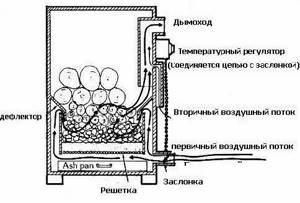
Schematic diagram of a conventional pyrolysis boiler
Popular models
Currently, gas generator boilers using wood and other solid fuels are widely represented on the market of equipment for space heating. They differ from each other both structurally and in cost. Among them, the following models are worth noting:
- OPOP ECOMAX 30 - economical boilers from Czech manufacturers. The presence of an electronic unit allows you to control two circulation pumps, a thermostat and a fan. The unit's performance coefficient reaches about 90%.
- Viadrus Hercules U32 - the body of this unit is made of cast iron. The boiler operates using wood, coal and does not depend on the availability of electricity. There is no fan in its design; air is supplied naturally.
- ATMOS DC is a steel boiler that runs on wood. The presence of an exhaust fan allows you to collect ash practically without dust. Some varieties of this model also have an air-injecting fan.
- Bastion M-KST-15P is a non-volatile boiler from Russian manufacturers. It has a large capacity, which allows the coolant to circulate through the system due to inertia. This heating system does not require circulation pumps.
The following models are also considered popular and inexpensive: Divo-10, Burzhuy-K STANDARD-20, Wattek PYROTEK 36, etc.
Fuel for gas generator boilers
The undoubted advantage of gas generator boilers is the fact that they can operate on almost any type of solid fuel. That is, they can be filled with ordinary chopped firewood, as well as any type of wood waste (sawdust, shavings) and briquettes, pellets, etc. made from wood waste. In addition, gas generating plants are practically waste-free production: the fuel in them burns with virtually no residues.

Gas generator boiler
Advantages of heating gas generating units
Installation of heating systems powered by gas generator boilers running on wood fuel has the following undoubted advantages:
- Extremely high combustion efficiency. In any installation designed to burn wood fuel, but not using the effect of pyrolysis, the efficiency cannot rise above 90 percent.
- Gas generating units are non-volatile and can be installed even in buildings that do not have a connection to a stationary power grid. Note that during the war, gas generator units were even placed on cars. The energy independence of the gas generating unit also reduces the cost of its operation.
- Almost any type of wood fuel can be used in a gas generator installation, from classic firewood to wood waste. The use of wood waste, sawdust, wood chips, and so on significantly reduces the cost of operating gas generator systems. However, remember that of the total volume of fuel supplied at a time, the percentage of wood waste should not exceed 30 percent.
- Large volumes of the combustion chamber allow gas-generating boilers to operate for a long time on one load of fuel, which facilitates the operation of such an installation.
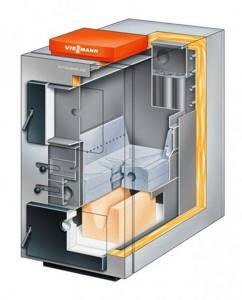
gas generator boiler device
Disadvantages of gas generating plants
Despite all the attractiveness of heating and heating systems based on gas generators, such devices also have certain disadvantages. The disadvantages of gas generator systems generally coincide with the disadvantages of conventional solid fuel boilers.
A solid fuel boiler, unlike automated liquid or gas systems, has limited operating autonomy. Such a boiler always requires a human operator who will add fuel as it burns. Also, the gas generator boiler must be regularly maintained and cleaned of soot and soot. Despite the almost complete combustion of organic wood fuel in gas-generating boilers, decomposition products are still present in such systems.
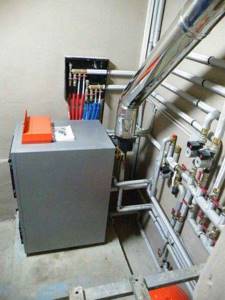
gas generating unit
Purchasing a system with a gas generator boiler is quite expensive financially. According to rough estimates, a gas generator boiler will cost you one and a half times more than a conventional solid fuel boiler. But the difference in cost should pay off after several heating seasons, based on the higher efficiency of the gas generator boiler.
Also, when operating gas generating units, it is necessary to use only dry fuel. On wet wood or sawdust, the pyrolysis process may simply not start. Therefore, gas generator boilers are often equipped with a drying chamber in which the fuel reaches the desired condition.
Power plants for continuous power supply
This category includes expensive models that can work up to 12 hours without interruption. It is useful for “capital” country houses and small industries, where long-term interruptions in power supply are possible, and electricity cannot be limited. If network gas is available, such power plants are the best choice, because the cost of a “gasoline” or “diesel” kilowatt-hour is 5-6 higher, and a gas power plant is serviced less frequently and is cheaper. In this class, it is worth taking a closer look at inverter units - they produce an ideal sine wave in all operating modes. A soundproof casing is also important. It’s one thing to endure 75 dB of rattling for a couple of hours, but quite another to be surrounded by noise for days.
Briggs&Stratton 8 kW Standby Generator – from RUB 194,000.
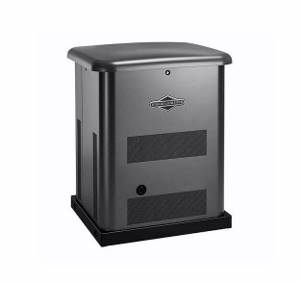
The American manufacturer's power plant is equipped with an original Briggs&Stratton V-engine. The engine is sensitive to fuel and lubricants - so use the manufacturer’s original oil, it costs about $5 per liter. With other, even good oils, Briggs & Stratton engines do not last long. The noise level of 68 dB is quite noticeable, so it is better to move the generator away from the house. As for maintainability, spare parts are rare. For example, oil scraper and compression rings have to be selected from other manufacturers or ordered. Hence, repairs may be a little more expensive.
Characteristics of Briggs&Stratton 8 kW Standby Generator
| Characteristic | Meaning |
| Fuel type | Liquefied gas; Main gas |
| Active power, kW | 7 |
| Maximum active power, kW | 8 |
| Generator type | Synchronous |
| Cooling type | Air |
| Starter type | Electric |
| Engine | Briggs & Stratton Vanguard V-Twin (USA) |
| Engine power, hp | 17 |
| Number of bars | 4 |
| Engine capacity, cubic meters cm | 570 |
| Fuel consumption | 0.6 kg/kWh (liquefied gas); 0.59 cubic meters/kWh main gas) |
| Noise level, dB | 68 |
| Weight, kg | 123 |
| Dimensions, mm | 710x890x620 |
| Development/Production | USA |
There are many videos on the Internet about the merits of Briggs&Stratton engines, here is a video about the indestructible four-stroke Briggs as confirmation:
Generac 7044 - from RUB 270,000.
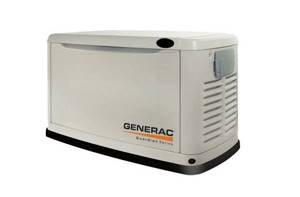
The manufacturer claims a unique passive engine cooling technology, which increases engine life. In my practice, there was an engine repair - the reason for which was piston wear. An autopsy showed that the rings could have been avoided by changing the oil a little more often. Use only the manufacturer's branded oil - Americans do not digest our liquid without the necessary additives. The design of the device is unique, but repairable, everything was repaired with a bang. There are complaints about the built-in battery charger. Generac has a poor dealer network, so this generator ended up in my hands rather than their service center.
Characteristics of Generac 7044
| Characteristic | Meaning |
| Fuel type | Liquefied gas; Main gas |
| Active power, kW | 7 |
| Maximum active power, kW | 8 |
| Generator type | Synchronous |
| Cooling type | Air |
| Starter type | Electric |
| Engine | Generac G-Force (USA) |
| Engine power, hp | 17 |
| Number of bars | 4 |
| Engine capacity, cubic meters cm | 530 |
| Fuel consumption | 0.58 kg/kWh (liquefied gas); 0.48 cubic meters/kW*h (mains gas) |
| Noise level, dB | 60 |
| Weight, kg | 175 |
| Dimensions, mm | 1218x732x638 |
| Development/Production | USA |
The video shows the generator starting up in winter. Problem-free start-up is possible if we are powered by main gas:

